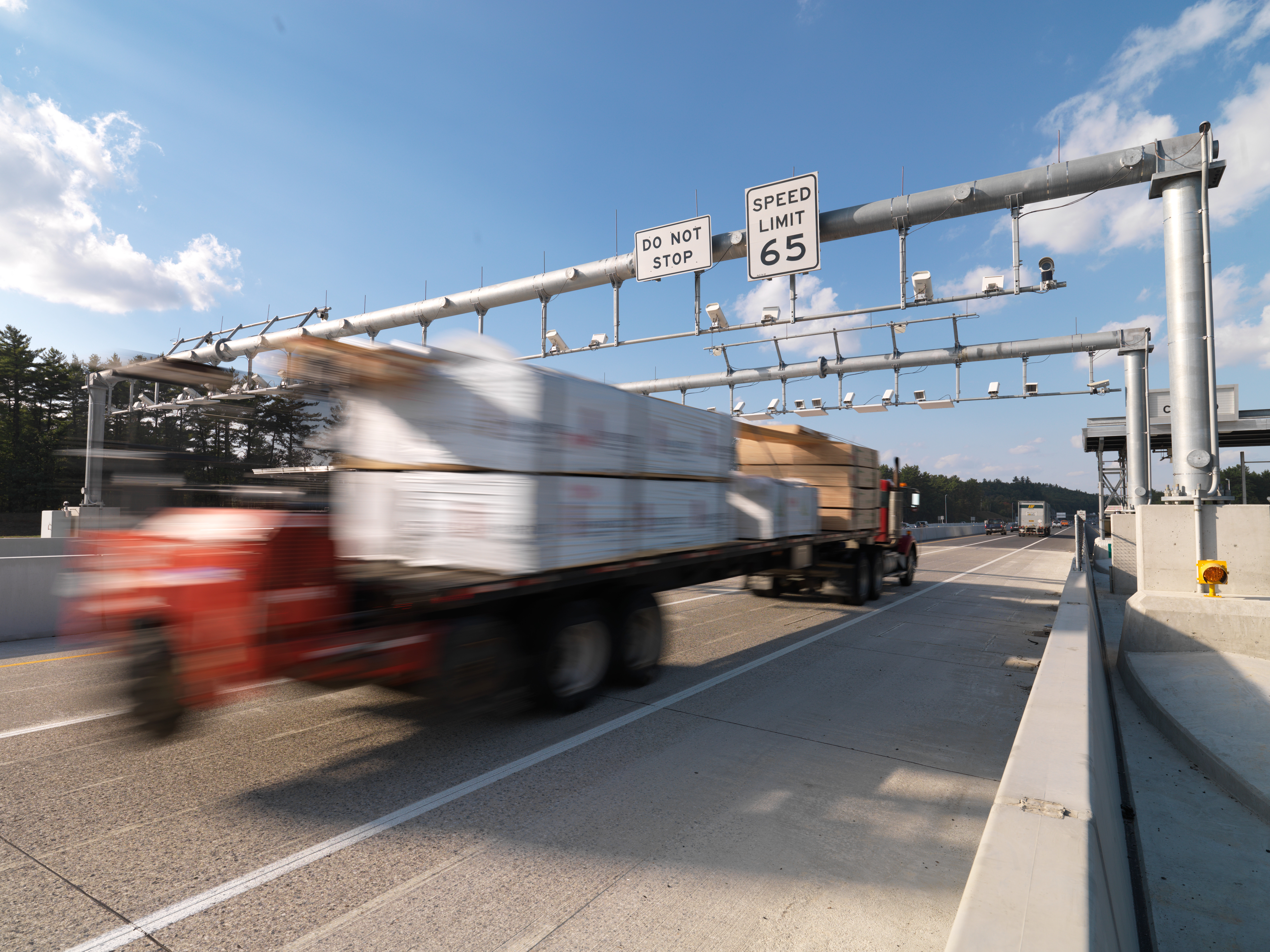
Instead of always striving for the latest shiny toys Kevin Hoeflich of
Amid the hype and razzmatazz surrounding the launch of Apple’s iPhone 6, the company also announced its new mobile payment system, Apple Pay. Built into the new iPhone 6, Apple Pay works at 220,000 merchants across America and is supported by major US banks and the big three credit card companies.
Apple’s CEO touted the payment system’s convenience – no more digging for debit or credit cards. Just wave or touch your phone to a reader. It’s easy, and supposedly more secure than a credit card.
Some within the toll industry predict smartphones could become a preferred payment method and also help facilitate interoperability: Download an app, drive under a gantry on your favorite toll facility and ‘Ping!’ your account is automatically charged for the trip. With Apple’s announcement, that prediction is now one step closer to reality.
Granted, smartphone manufacturers aren’t intentionally creating new toll collection technologies. But they have built a platform that allows entrepreneurs to develop applications and technologies that could have a profound influence on transportation and the toll industry.
Does this mean smartphones have taken the lead in the toll collection technology flooding the market? Will everyone be paying tolls with their smartphones in 10 years? You can’t fault toll executives for asking the question. When you consider how fast cashless tolling was adopted in the US and how prevalent it is throughout the world, toll executives are certainly justified in asking ‘What’s next?’ and wanting to be prepared for it.
Smartphone wallet?
Are smartphones the new wallet? According to statistics, they are. Sixty percent of the goods and services Millennials [those born between 1980 and 2000] buy are purchased using mobile technology. Payment platforms, such as Google Wallet, already are popular among this demographic of 18 to 34-year olds, who represent 24% of the American population - roughly equivalent to the Baby Boomer generation.
Millennials adopt technology at a higher rate than older generations, as indicated by the proliferation of smartphone use among this age group. Smartphones are how they connect to the world and if the device offers a payment avenue, they will use it.
But I wouldn’t submit a purchase order for a new smartphone-driven tolling technology system just yet.
New products and business models promising lower costs and more efficient, effective results for electronic tolling are flooding the toll market. Many of these products are from new third-party vendors, not traditional industry players.
This new class of entrepreneurs sees a need and is filling it with products, such as RideScout, Carma and GeoToll. Or, they are interested in the toll road as one component of an overall app for managing personalised transportation. More important, they see the toll industry as a way to make money, otherwise they wouldn’t be involved.
Just as we’ve seen with the smartphone industry, competition among this new breed of vendors will drive innovation and we are likely to see even smarter toll technologies in the coming years. For now it is still too early, and the influence of these products too uncertain, for a toll authority to place all of its chips on one particular methodology.
The smartphone in and of itself is not necessarily the answer. It may work as a payment device, but will it work as a transponder or allow occupancy declaration? While others attempt to answer that question, something much bigger is around the corner.
In the near future, the toll industry will witness a historic eclipse of in-vehicle technology, personal technology and roadside technology. No one knows for sure when it will happen or what it will look like, but it cannot be ignored and when it does happen, the impact will have significant ramifications on transportation systems. All the more reason toll executives should not make rash decisions now.
Reality check
Meanwhile, those same executives read the headlines. They attend conferences, see the industry evolving rapidly and many of them are feeling pressured: “Should we invest in one of these new technologies? Are they better for our customers and more efficient than our current business model? How much should we invest, given there is no clear ‘winner’ yet? What happens if we do nothing? Will the industry leave us behind?”
The truth is video tolling, transponder technology and all-electronic tolling systems are all alive and well. Agencies considering anything else should proceed cautiously.Given tolling’s dynamic environment, the wiser executive decision may be to swap the procurement check for a reality check:
Your toll agency is not alone in feeling anxious or pressured to read the industry’s crystal ball. Most toll authorities feel the same way.
Your agency is not being left behind technologically. There is no one-size-fits-all approach to tolling, at least not yet. Right now, there is more talk and posturing than actual production and implementation.
Before emerging technology can go live, more planning and risk mitigation is necessary. That will take time. In the case of Apple Pay, some retail consultants say adoption will be slow until customers are convinced their data is secure. At best, it will be several years before 100% of iPhone users will have the specially equipped phone, which will represent about 50% of consumers. In short, the toll industry has seen its share of change and more change is on the way, no doubt. But it won’t happen overnight.
If your agency takes any action, it needs to be carefully planned and incrementally executed where possible.
Toll authority executives could drive themselves crazy trying to predict what the industry, let alone their own facilities, will look like in 10 years. In my opinion, that time and energy could be better spent preparing for change, instead of trying to predict it.
Executives can position their agencies to be ready for future toll technologies – whatever they may be – with these 10 steps:
Understand your agency’s business case and financial situation.
Create a risk assessment/risk register. Knowing your agency’s tolerance for those risks – especially the financial and technological ones – can go a long way in helping you make informed, prudent decisions regarding new technology or business practices.
Plan. Strategic planning can help you identify your system goals, develop a concept for the future and understand how and when to incorporate new technologies.
Define what success looks like and the requirements necessary to achieve that vision.
Conduct a system assessment. It will help you understand your current system’s gaps and its ability to grow.
Know your customers. Who they are, when they use your facility and their payment preferences.
Consider outsourcing some services. Bringing in specialized expertise where it makes sense can be both cost-effective and more efficient.
Tap into the knowledge and experience of industry and crossover groups, who share common goals for promoting sustainable roads and sustainable funding. Listen for common threads of thought that could help you connect the dots to what the future may hold.
Seek opportunities to participate in government programs designed to test new technologies. Ask vendors to provide new product demos or testing that will minimally impact current operations.
Consult your industry contacts. Learn from their experiences with toll technology.
You may decide the best course of action is no action, at least not in the near term. Or, you may decide change is necessary.
The good news is it doesn’t have to be all or nothing. Short- to mid-term ‘bridge’ solutions or a gradual transition is a perfectly acceptable response. For example, some toll agencies are incrementally improving current operations by installing multiprotocol readers, which require switching out equipment but without significant change to infrastructure.
If you should choose a new technology or approach, properly allocate risks and responsibilities and include performance standards in contractual agreements. The consequences of non-performance also must be clearly spelled out. A properly planned approach will allow you to retain the right amount of control over revenue assurance and customer services.
Stick to what you know
The worldwide toll industry is undergoing rapid change with more on the way but exactly what those changes will look like remains to be seen. So what is the best course of action in tolling’s dynamic environment - do not react to the hype. Make decisions based on what you know to be true for your agency. Go back to basics; revisit your business case and your customer profiles and let those insights be your guides.Remember, the end goal is not to have the latest shiny toys. It’s to deliver customer service in the form of high-quality, reliable transportation for the benefit of your customers and the economy. If your toll agency is meeting that goal, you’re already ahead of the curve.












